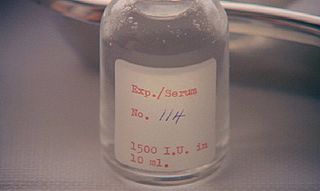
36 Therefore, the search for novel, therapeutic CaMKII inhibitors that avoid side effects on the central nervous system and other organs should focus on isoforms or splice variants of CaMKII. 30–36 We recently identified that CaMKII-δ9 is the most abundant CaMKII-δ splice variant in human heart and acts as a central mediator of DNA damage and cell death in cardiomyocytes. 27–29 Different isoforms and splice variants possess distinct or even opposite biological and pathological functions. It is alternatively spliced to generate 11 different variants. Therefore, although CaMKII has been regarded as a promising drug target for cardiac disorders, to date, there is no drug targeting CaMKII for clinical therapy of heart diseases.ĬaMKII is encoded by 4 genes, CaMKII-α, β, γ, and δ, and CaMKII-δ is predominantly expressed in the heart. All these issues hinder their further development as clinical treatments of human cardiac diseases. 26 As to autocamtide-2–related inhibitory peptide, it is a peptide inhibitor with poor membrane permeability and bioavailability. 25 In addition, KN-93 inhibits CaMKII indirectly through competing with Ca 2+/CaM, and only limits the initial step of CaMKII activation, without affecting the Ca 2 +-independent autonomous activity. However, KN-93 also directly inhibits the potassium current I Kr 23 and other voltage-gated potassium channels, 24 together with the L-type calcium channels. 12–14, 18–22 Two inhibitors have been most widely used in research, including a small-molecular allosteric inhibitor KN-93 and a substrate-based peptide inhibitor autocamtide-2–related inhibitory peptide. Excessive CaMKII activation has been shown to be critically involved in multiple cardiac pathological conditions, such as I/R injury, 11, 12 myocardial infarction, 13, 14 arrhythmia, 15, 16 cardiac hypertrophy and remodeling, 17, 18 and heart failure, 14, 18 and the inhibition of CaMKII overactivation profoundly alleviates these cardiac diseases in animal models. 6, 7ĬaMKII (Ca 2+/calmodulin-dependent kinase II) is a serine/threonine protein kinase that modulates various biological functions and pathological processes in the heart, including membrane excitability, cellular Ca 2+ homeostasis, metabolism, gene transcription, and cell survival, 8–10 and therefore is an important regulator of cardiomyocyte death and cardiac injury. 4, 5 Although cardiac I/R injury has been recognized for decades, there is still no clinical therapy available to effectively protect against I/R damage in the heart. However, myocardial reperfusion can lead to further damage of the heart, named ischemia/reperfusion (I/R) injury. Timely restoration of coronary blood flow, that is, reperfusion, is the best way to reduce cardiac ischemic injury–induced cardiomyocyte loss. 2, 3 Because of a very limited capacity for self-replacement, loss of mammalian cardiomyocytes cannot be replenished from living cells, resulting in depressed cardiac function, arrhythmia, heart failure, and sudden death.

1 Cardiomyocyte death plays a central role in the pathogenesis of multiple cardiac disease, including ischemic heart disease. Ischemic heart disease has become the leading cause of morbidity and mortality around the world. Inhibition of different targets in cardiomyocytes and tumor cells with hesperadin provides a strategy for the joint treatment of cardiovascular diseases and cancer. Our in vivo and in vitro results define hesperadin as a promising compound for the clinical therapy of ischemic heart diseases. Customer Service and Ordering Information.Stroke: Vascular and Interventional Neurology.

Journal of the American Heart Association (JAHA).Circ: Cardiovascular Quality & Outcomes.Arteriosclerosis, Thrombosis, and Vascular Biology (ATVB).


 0 kommentar(er)
0 kommentar(er)
